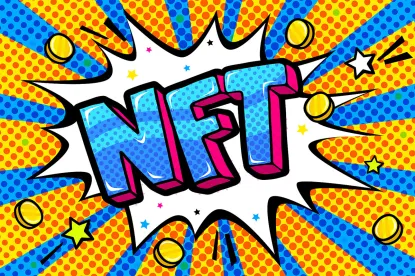Art Basel is a premiere event in Miami Beach, showcasing the best in modern art, which has typically existed in the physical realm. After a break in 2020 due to COVID, Art Basel returned this year with a strong crypto flavor as the culture surrounding Non Fungible Tokens (NFTs) made its mark. Thousands of people attended various crypto conferences and NFT networking events throughout Art Basel week. One of the most popular exhibits in the Miami Beach Convention Center allowed visitors, including myself, to create an NFT on the Tezos blockchain by submitting their video image to an artificial intelligence algorithm for interpretation.
Despite all the media attention, it is easy to say that NFTs selling for millions of dollars are a passing fad since they are just that pixelated punk and animal cartoons. In fact, art NFTs typically do not store images on a blockchain but instead display them through a website link. These NFTs are only unique because their special file (or hash) data, ownership history from creation, and sales data are all stored on a blockchain. So how can a unique file identifier, transaction data, and a web link to a pixel character be so valuable and how did the culture surrounding these tokens come to dominate Art Basel?
I would say that the answer is not in the digital images that NFTs display and can be easily copied. The answer is also not in the utility of provable authenticity and ownership history that NFTs offer to the art world. Instead, the real value of NFTs and the reason they have exploded onto the cultural scene is in the social networks they create. We already know that the social media networks of Internet 2.0 like Facebook, LinkedIn, Twitter, and Instagram are immensely valuable. But these networks are walled and centralized gardens where you (and your personal data) are the product. Today, art NFTs are driving the decentralized blockchain social media groups of Web 3.0 where the users are the owners. The best ones could continue to be immensely valuable as their influence grows.
For example, NFT collections often have associated Internet groups or “channels” on Discord or Telegram. By linking a wallet to a channel and proving ownership of an NFT from its associated collection, a holder can access exclusive groups that offer the same features you might use in a Facebook group. For NFT collections whose holders include early crypto investors, access to these groups can be a very valuable networking tool. NFTs can also be used to access exclusive social gatherings in real life. For example, at Art Basel week, various NFT communities hosted parties where holding an NFT from their collection was the required ticket for entry. Also, NFT communities are starting to buy real-life galleries and other venues for their holders to enjoy. In many ways, NFT communities are becoming the digital social associations of the future.
For example, at the Bitcoin conference in May, I connected with a fellow NFT collector who held me a front row seat on the first day of the packed event. When I later traveled to Money 20/20 in Las Vegas, I met a holder of NFTs from several prominent collections. We connected easily because the NFT world is still relatively small and those who participate in it are eager to share their NFT experiences with other collectors at any level. He invited me to join his group of friends on his personal Discord channel and I ultimately met these traders, entrepreneurs, and other professionals in person at Art Basel. My good friend from the Bitcoin conference also joined us and we had a weekend that I will always remember, regardless of how many dollars my NFT collection may be worth one day.
I would not have enjoyed these rich new friendships and experiences without the value of the NFT community. The next time you hear about an NFT cartoon dog or gorilla selling for tens or hundreds of thousands of dollars, try to see the underlying social network that created such immense value.




 />i
/>i
